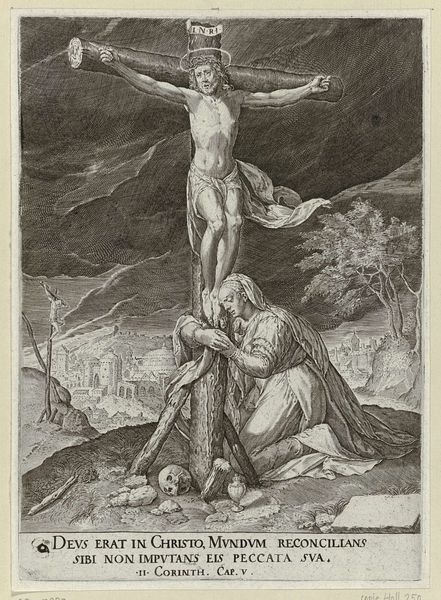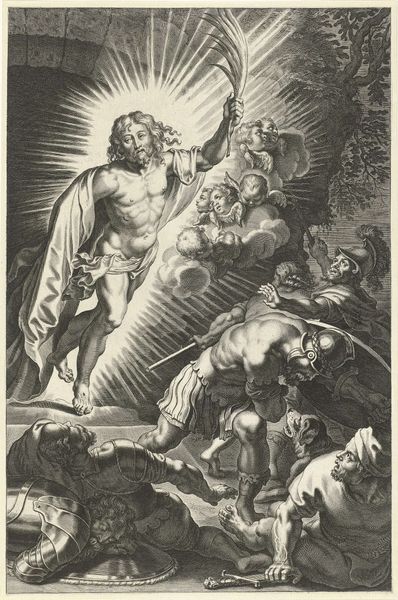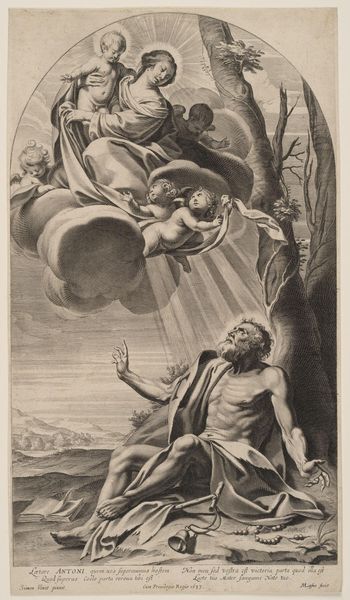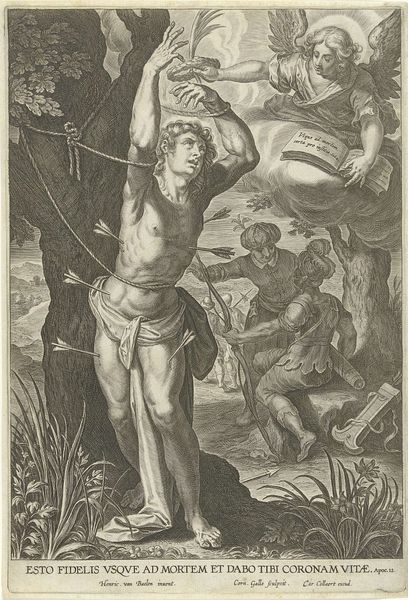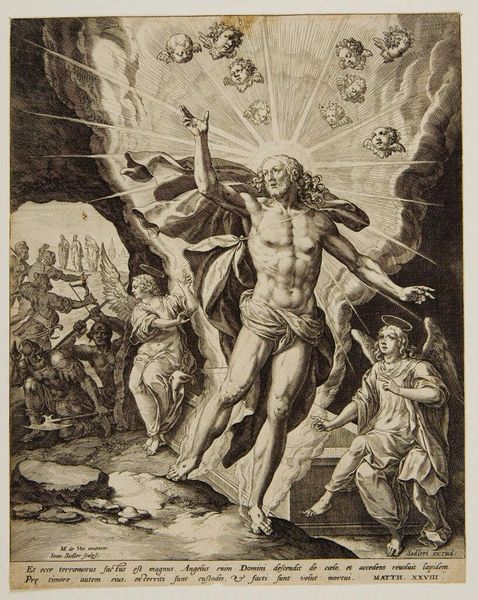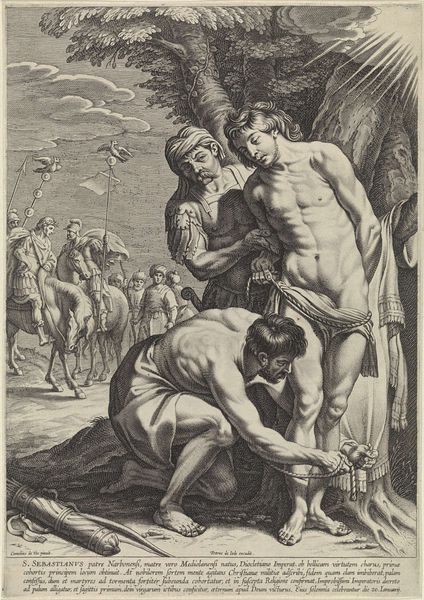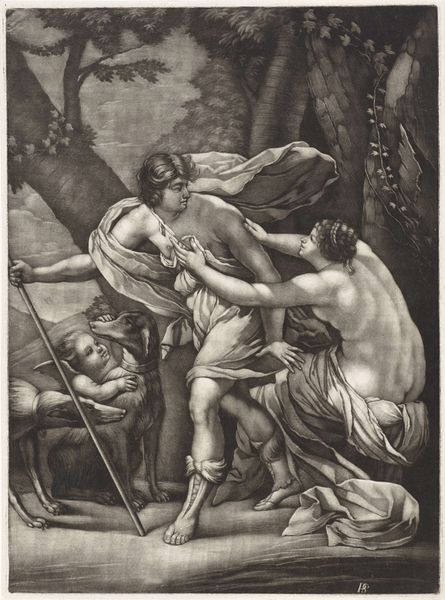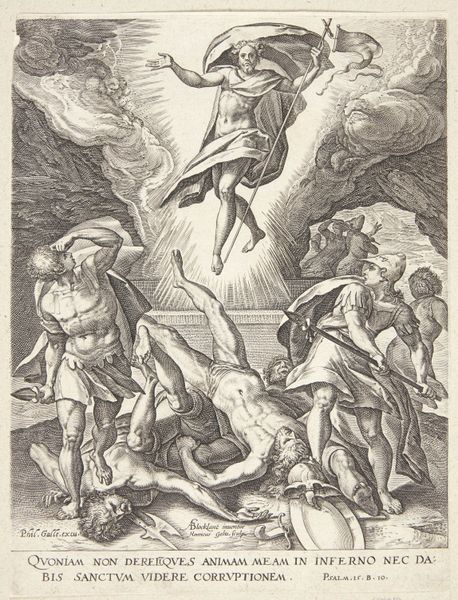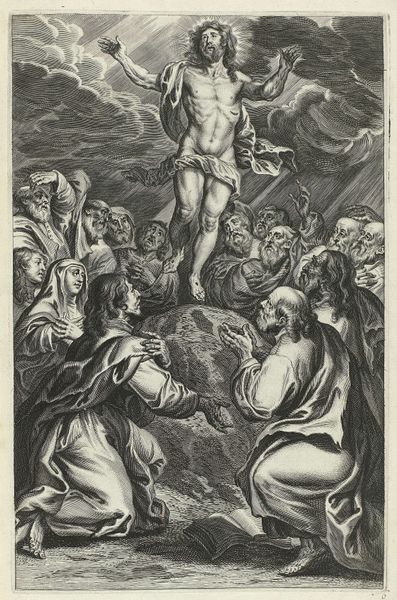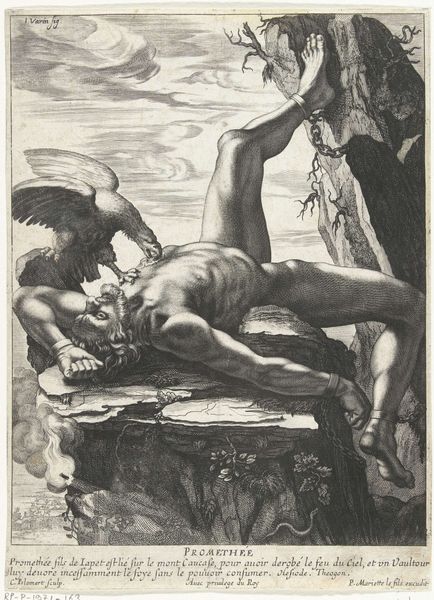
print, engraving
# print
#
old engraving style
#
mannerism
#
figuration
#
11_renaissance
#
mythology
#
history-painting
#
engraving
Dimensions: height 178 mm, width 133 mm
Copyright: Rijks Museum: Open Domain
Curator: Here we have "Apollo flaying Marsyas," an engraving made sometime between 1581 and 1612, credited to Theodoor Galle and currently held at the Rijksmuseum. What are your first impressions? Editor: The raw detail is astonishing, it's also difficult to look at; a true spectacle of suffering. The rendering of flesh, veins, and musculature… it's incredibly visceral. You can almost feel the pull of the skin. Curator: Indeed. Galle really captured the drama inherent in the mythological subject. Think of the story: Marsyas, a satyr, dared to challenge Apollo, god of music, to a musical contest. He lost, of course, and Apollo exacted a brutal revenge, flaying him alive. Editor: And Galle hasn't shied away from that brutality. You see the tools right there in Apollo's hands, he’s in the process of skinning Marsyas. You can also see the discarded flute lying on the ground next to Marsyas, a very physical, grounded detail among all the soaring violence. Curator: This print circulated widely, shaping popular understanding of the myth, and bolstering Apollo's image as the epitome of divine authority. These images played a significant role in shaping societal perceptions of power, justice, and the consequences of challenging established hierarchies. Editor: Power is exerted physically in this scene, certainly. There's also a subtle elegance in Galle's line work. You can see this level of care in the textures of the tree bark, or in Apollo’s radiant halo, creating an unsettling tension with the horrific central act. Curator: And the inscriptions below reinforce the image’s narrative function, doesn't it? To teach the folly of hubris? These visual and textual elements really amplified the impact of the narrative, serving both as entertainment and moral instruction. Editor: The inscription really is important because it ties the piece together by emphasizing the contrast between skill and material, divinity and mortality, permanence and dispossession. That emphasis offers another perspective that gives an older piece continuing relevancy. Curator: I agree. It is not just the tale, but the engraving as a piece of crafted, carefully distributed propaganda, designed to leave an impression. Editor: And I'm struck by the making of the piece itself, an image reproduced for widespread consumption—a sort of manufactured spectacle. A stark image made accessible through material means. Curator: It highlights how the stories of the elite get retold through a wider distribution that becomes ingrained in society. Thank you, that adds an interesting layer.
Comments
No comments
Be the first to comment and join the conversation on the ultimate creative platform.
